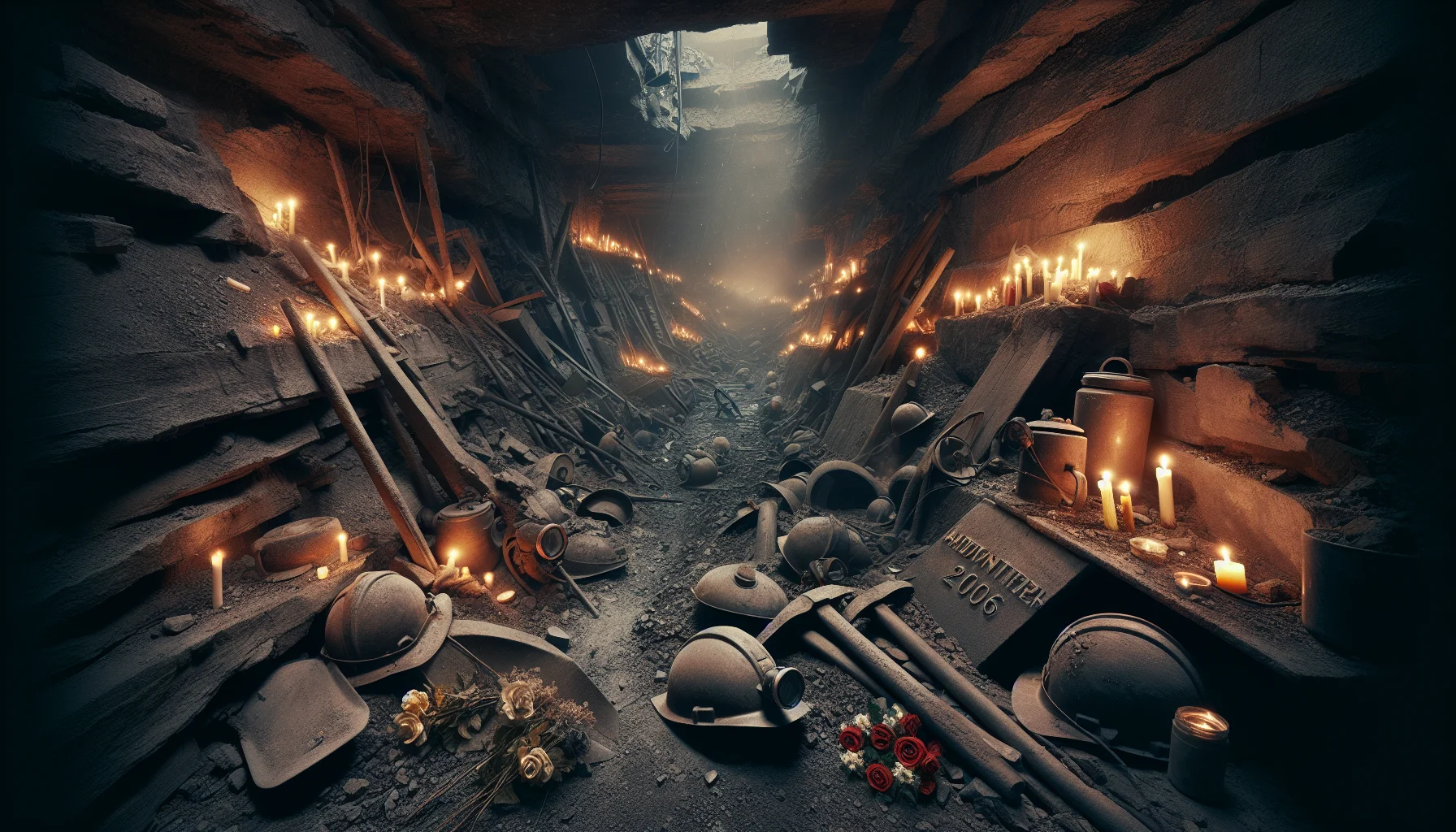
Pasta de Conchos Mine Disaster
by: The Calamity Calendar Team
February 19, 2006
The Dawn of a Crisis
In the early hours of February 19, 2006, in the small municipality of San Juan de Sabinas, Coahuila, a day began like many others for the miners at the Pasta de Conchos mine. Yet, unbeknownst to them, this day would mark a chapter in Mexico's mining history written in tragedy and sorrow. Known for its rich, underground reservoirs of coal, the mine operated under the stewardship of Industrial Minera México, a subsidiary of the prominent conglomerate, Grupo México.
Over the years leading up to that fateful day, a growing chorus of voices had raised concerns over the mine's increasingly perilous conditions. Workers, haunted by the persistent whiff of escaping gas and the oppressive, poorly ventilated passages, stood in anxious anticipation. Unions echoed these fears, repeatedly highlighting the hazards and pleading for stricter enforcement of safety standards. Despite these cries, stories emerged from within the dark veins of coal-filled tunnels of warnings unheeded.
The Catastrophe Unfolds
The serene silence of the mines, punctuated only by the steady rhythm of pickaxes and machinery, was rudely shattered at around 2:30 am. A violent explosion tore through the mine, catalyzed by the buildup of methane gas—a volatile mix that had long been an unspoken specter within the mine's depths. The tremor not only crumbled sections of the mine but also buried beneath it the hopes and lives of 65 miners, entrapped far below the Earth’s surface, removed from any line of sight of daylight.
The response was immediate. As the reality of the catastrophe set in, rescue teams were mustered with urgency. The initial scramble was marked by a race against time, a desperate attempt to pump out noxious gases and forge a path to the trapped miners. Volunteers, from local communities and among the miners' families, added their efforts to the official teams, aching to save their loved ones.
The Hurdles of Hope
As the days stretched on, the enormity of the disaster became clear. Temperature levels within the mine soared to intemperate highs, oxygen levels precious and stingy. What was to be a rescue opera turned into a nightmare, as unstable conditions forcibly halted progress intermittently. The rescuers’ courage was often met with frustration as lethal gas levels mocked their endeavors, daring them to proceed.
The realization soon settled on rescuers, families, and officials alike: the chance of finding survivors dwindled with each passing minute. As hopes dimmed, the narrative shifted from rescue to recovery—a shift heavy with the burden of presumed loss. Of those 65 miners, only two bodies would ever be recovered, a stark symbol of the barriers that held the rest out of reach.
Thanks for subscribing!
Shockwaves of Accountability
The disaster at Pasta de Conchos was felt far beyond the confines of Coahuila. Families, parting with hope, took up the mantle of accountability. Their searing anger found a prime target in Grupo México, whose oversight they deemed a gross failure, a betrayal woven from years of neglect. Advocacy groups, too, took up the call, with demands for justice resounding not only in Mexico but with international solidarity.
Scorn was heaped upon the shoulders of the mighty conglomerate, spotlighting the acute neglect in adhering to the most basic yet critical safety norms. Deliberations over accountability and redress ensued, marked by protests that resonated in candlelit vigils and fervent cries for reforms. Mine safety had emerged as a focal point not just for Pasta de Conchos but the industry en masse.
Road to Remembrance
In response, the Mexican government vowed to probe into the incident, a pledge that held promise on paper but found little root in the survivors' heart. Official inquiries were followed by rhetorical promises, the tangible fruit of which seemed always just out of grasp. International scrutiny cast broader shadows upon Mexico's mining industry's safety record, pushing for mandatory reforms and enforcement.
Yet the echoes of 2006 refuse to dissipate into silence. Despite institutional roadblocks and logistical quagmires, families remain relentless, crusading for closure—both emotionally and physically, as they clamor for the recovery of those still locked away. Amidst this continuous struggle, Pasta de Conchos stands as a grave reminder, a story of the human cost in the balance of corporate ledger sheets and worker safety.
A Legacy of Change
Years have feathered on, yet wounds remain fresh, compelling society, corporate entities, and governments to re-evaluate the value placed on human life against industrial progress. Families continue to navigate through the labyrinth of advocacy, justice, and memory, their plight and persistence fueling demands for corporate accountability and legislative change.
The legacy of Pasta de Conchos extends far beyond its haunting tunnels. It lives in the ongoing dialogues surrounding mining safety, labor rights, and corporate responsibility—an incessant call to action, a clarion cry for reform. And as these dialogues evolve, they aim to forge a path where past tragedies will steer future foresight, ensuring no more names are etched into histories of preventable catastrophes.
Amidst all this, as families of those miners hold onto whatever solace they can find, lighting candles in remembrance, they remember not just the tragedy, but the lives lived—multitudes of dreams and joys, ambitions that remain left unfinished. Their story is one of indomitable spirit, a testament to resilience in the face of unspeakable loss, echoing through windswept fields over Coahuila and beyond.
Stay in the Loop!
Become a Calamity Insider and get exclusive Calamity Calendar updates delivered straight to your inbox.
Thanks! You're now subscribed.